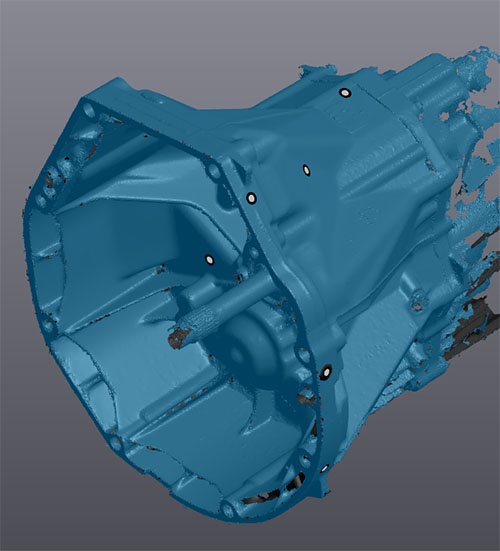Acceptable tolerence between crank and gbox input shaft?
Discussion
Morning mofo's,
Currently working on adapting my S2000 gbox to fit a K20 engine, however i'll never be able to get the box perfectly aligned to the engine so what would be acceptable alignment tolerance? What are the side effects of misalignment? Excessive wearing of the input shaft bearing, clutch and end crank journals? Anything else?
I am using an Creaform 3D scanner to scan in my engine/gbox which has a accuracy of about 0.5mm over 1m.
An adapter plate is a last resort, I am trying to determine if its possible to get an OEM centre plate to align correctly with a K20 clutch, and if so i'll be looking to modify the existing bellhousing to accept a weld in ring of new mounting holes.
Cheers!
Currently working on adapting my S2000 gbox to fit a K20 engine, however i'll never be able to get the box perfectly aligned to the engine so what would be acceptable alignment tolerance? What are the side effects of misalignment? Excessive wearing of the input shaft bearing, clutch and end crank journals? Anything else?
I am using an Creaform 3D scanner to scan in my engine/gbox which has a accuracy of about 0.5mm over 1m.
An adapter plate is a last resort, I am trying to determine if its possible to get an OEM centre plate to align correctly with a K20 clutch, and if so i'll be looking to modify the existing bellhousing to accept a weld in ring of new mounting holes.
Cheers!
stevieturbo said:
Weird...I did type a reply earlier........does nobody make a kit for them already ?
Even perfect alignment has a tolerance, it just depends what it is. Is +- 1mm or 0.1mm acceptable? With my current equipment I could get down to 0.5mm I reckon, if it needs a greater level of accuracy then i'll have to start thinking about using a CMM.Luckily the starter fits to the block so that's one thing I don't have to worry about.
Adapter plate kits are available but it requires custom flywheel and then the whole thing costs ££££. I am trying to see whether I can use OEM flywheel, clutch, S2000 centre plate and simply modify the bellhousing. This should work out cheaper as a kit if possible.
AER said:
You might want it tighter than that, IMO. If you wobble the input shaft of the gearbox, put a dial indicator on it and see how much wobble/slack it has (I don't mean run-out). Don't plan on using all of it - maybe 20% or so.
This is Honda we are talking about, accuracy and mass production is their specialty, it seems this line of thinking extends to the gearbox too even though its made by Getrag(?) as the input shaft has no play. Are they using press fit or conical type bearings?spyder dryver said:
If you have access to a CMM then why not use it. I went through a similar exercise when fitting a T50 gearbox to the back of a 3SGE engine. I put the engine plate on the CMM then used the dimensions to machine new dowel and bolt holes in the bellhousing. When it came to building the input shaft slid into the spigot bearing so easily that I thought that I'd forgotten to put the bearing in!
Unfortunately I don't have a CMM and finding somebody locally hasn't throw up any results either.. would love to own a CMM one day.Will see how accurate I can get the plate as is with my scanner and go from there.
AndyS2 said:
I'm working on a similar project at the moment, mating the S2000 gearbox to an Audi 2.0TFSi engine. I've got the gearbox scanned using a Faro arm so if you want me to compare the results from your scanner I can do?
That would be absolutely awesome! This is a quick dirty scan prior to processing the mesh for reverse engineering. The scanner seems to suffer with anything that sharp edged and threaded holes are hopeless. I guess we only need to be absolutely accurate with the dowel locations relative to the input shaft.Your more than welcome to have the scan to overlay over your existing data.
PM sent.

Gassing Station | Engines & Drivetrain | Top of Page | What's New | My Stuff



